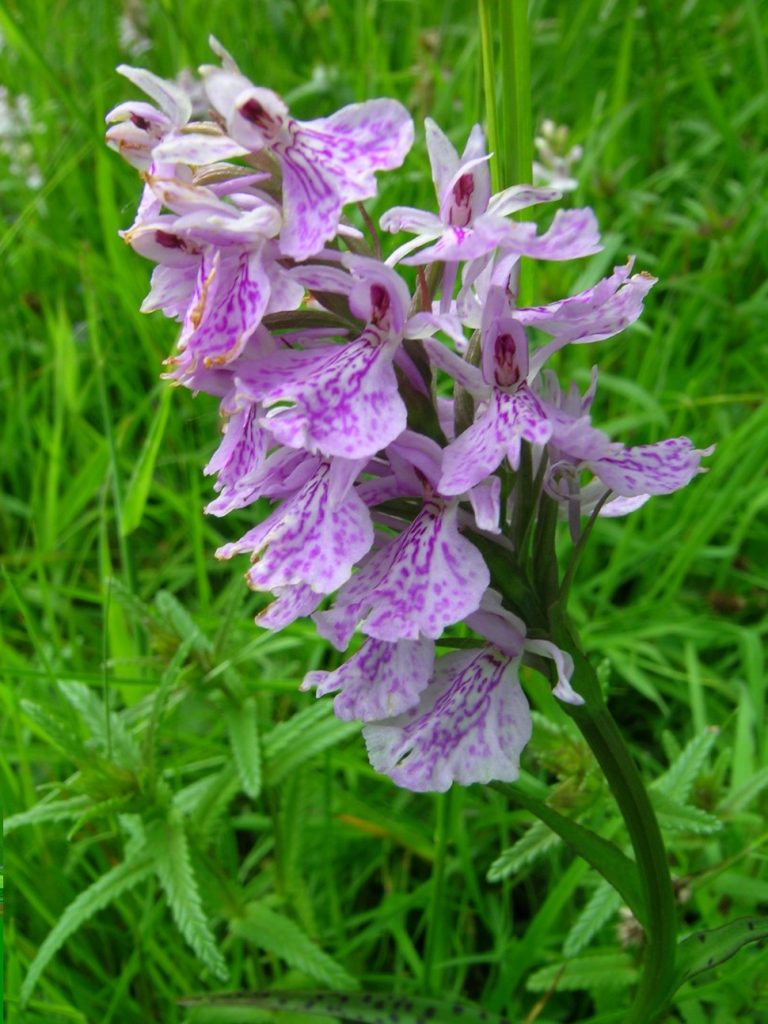A terrific orchid count this year. Uphill and downhill and then across the slope. Lots of marbled white butterflies. Thank you all very much indeed.
This year’s total of 5,033 pyramidal orchids is down from last year’s record-breaking total of 5,742. I think this is because of the hot and dry spring we have had. We did not count the common spotted orchids this year because they were very brown and on their way to setting seed making them almost impossible to see. It’s been an early year and the spotted orchids are over on dry sites but there will still be some wonderful ones in full flower in damp habitats.
The pyramidal orchids at Windmill Hill are one of the biggest populations in the county. Previous orchid counts were:
- 2018: 1,227 pyramidal orchids and 318 common spotted orchids
- 2019: 3,574 pyramidal orchids and 197 common spotted orchids
- 2020: orchids not counted because of Covid restrictions
- 2021: 4,030 pyramidal orchids and 97 common spotted orchids
- 2022: 5,742 pyramidal orchids and 198 common spotted orchids
The pyramidal orchids are an indicator of the superb quality of the limestone grassland on Windmill Hill and how it is being managed by the Much Wenlock Windmill Trust with a late summer hay cut in place of the previous horse grazing. The species-rich grassland on Windmill Hill and the famous windmill tower are looked after by the Trust who lease the site from the Wenlock Estate. We are looking for a trend over five years to demonstrate that the change in grassland management in 2018 from pony grazing to a hay cut & baling in August is improving the quality of the superb species-rich grassland flora. The overall trend is definitely upwards since 2018 when there were 1,227 pyramidal orchids. This data from the past five years will be included in the formal submission to be made later this year to Natural England for their formal views on the proposal by the Much Wenlock Town Council to designate Windmill Hill as a statutory Local Nature Reserve.
Pyramidal orchids are a glorious pink orchid characteristic of species-rich limestone grasslands – see attached photo with more on Google Images. They are only found in two main locations in Shropshire where there are limestone soils with grasslands or old quarry workings: on Wenlock Edge/Benthall Edge and around Oswestry, for example the Llanymynech Heritage Area and Dolgoch Quarry.
Common spotted orchid – see attached photo – is usually associated with more neutral soil pHs than are present on Windmill Hill. This species is mainly located at the western and eastern ends of the grassland where there is a bit more moisture in the slightly deeper soils adjacent to woodland.
Why do we count the orchids?
Orchids are a natural part of agriculturally unimproved species-rich grasslands on chalk and limestone soils and on pH neutral soils. They grow together with many other characteristic plant species associated with these grasslands which are invariably rich in species. If such grasslands are not grazed or cut for hay, then scrub species start to colonise including brambles, wild rose, hawthorn, blackthorn and woodland trees such as ash, oak and birch. The grasslands tend to become less rich in species and more dominated by coarse grasses such as perennial rye-grass, false oat-grass and cock’s-foot. They start to resemble roadside verges. These grasslands are often cut in August and the cuttings baled. This exports the plant nutrients that the plants absorb from the deeper soils and ensures that the soil fertility remains low thus both preventing the growth of coarse grasses that love rich nutrients in the soil and encouraging the growth of wildflowers.
Monitoring changes such as the change from pony grazing to hay cutting in 2018 can be very complex and time consuming as you need to measure the changes in many plant species. Counting orchids is an indicator of the changes in the grassland and in the quality or nature conservation value of the grassland. We all love orchids and they are easy to count.
My thanks again to the orchid experts for a superb effort today.
John Box
Much Wenlock Windmill Trust



